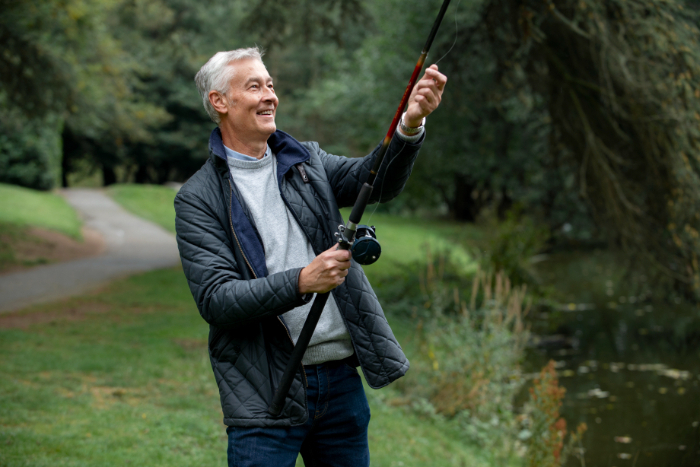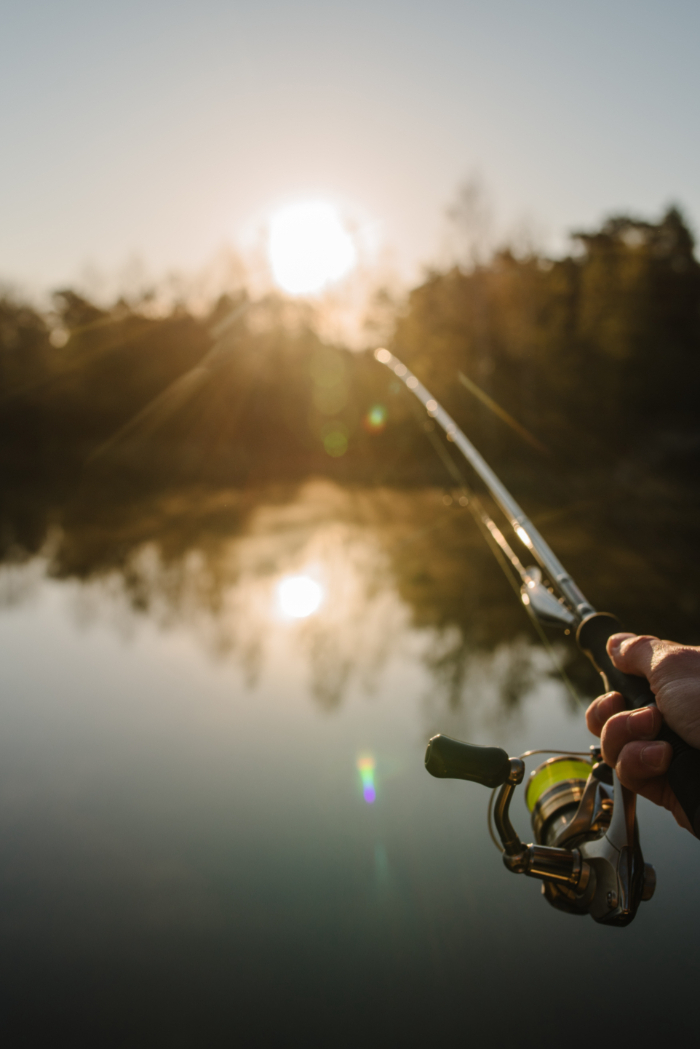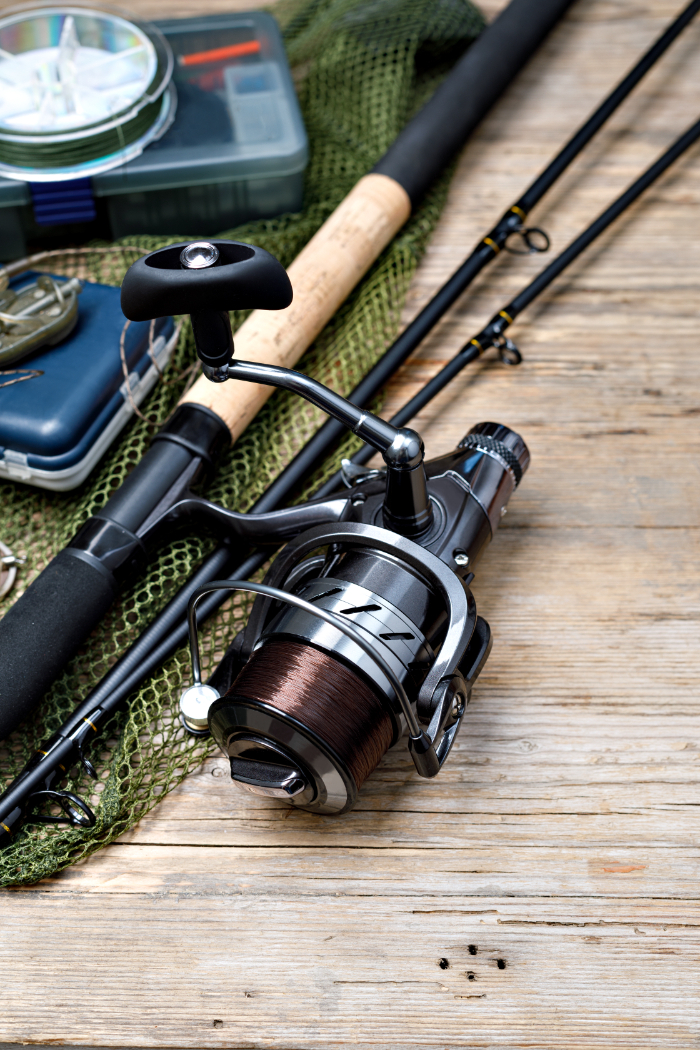Are you curious about the art of salmon fishing on Scotland's famous River Spey? This article offers expert advice on the essential techniques and equipment needed for successful salmon fishing in this iconic location, from selecting the right tackle to mastering the unique Spey casting method. Find out about salmon fishing on the River Spey.
Fishing Tackle
Fishing for the dazzling, swift-moving Atlantic salmon calls for the right tackle selection. When it's about fishing on the Spey - a river famous for its superb salmon fishing, using a double-handed rod is essential. The Spey's vast expanses require considerable line control, and double-handed rods are perfect for this task.
They are the top choice for Spey fishing enthusiasts, allowing for Spey casting, a technique indispensable for managing the river's tricky water conditions. In the case of spring salmon that commonly dwell in colder, deeper waters, a sinking line is of utmost importance.
On the other hand, summer salmon, typically found at the water's surface, should ideally be targeted with a floating line. Accompanying the fishing rod, other crucial components of a Spey fisher's tackle are shooting heads, leaders, and running lines.
Additionally, the choice of a salmon fly, possibly the most symbolic part of all, is based on a few factors - the season, the water conditions and the individual angler's preference. Whether it's a classic hand-tied fly or a contemporary tube fly, it's always worthwhile to seek advice from a local ghillie or a fishing guide. They have the knowledge and experience to ensure your salmon fishing trip on the Spey is rewarding and successful.
Waders and Clothing
When you plan to spend a day dedicated to angling on the Spey, it's not just about having the right fishing tackle. Your comfort and safety are significant factors that need attention. A crucial part of an angler's attire is their waders. The importance of a quality pair of waders that are both breathable and waterproof cannot be overlooked.
An added feature such as an adjustable belt becomes indispensable to prevent water from entering, ensuring you stay dry and undistracted throughout your angling expedition. Given the ever-changing weather conditions in Scotland, it's wise to opt for layering. This allows for adjusting to climatic fluctuations swiftly and effectively.
Having a windproof and waterproof outer layer is indispensable. This piece of clothing offers protection against the harsh elements, making sure your fishing experience is not hindered by unwelcome gusts or unexpected rainfall. Headwear is another crucial element that may often be forgotten. A hat serves dual purposes, depending upon the time of the year.

During the summer months, it shields your face and eyes from the scorching sun. In contrast, during the colder months, a hat helps retain heat, providing much-needed warmth. However, there is more to preparing for a day on the Spey than just practical considerations. There is a dignified dress code to uphold – one that harks back to the time-honoured traditions of the sport.
Over the years, conventional tweeds have made way for modern materials. But that doesn't mean a casual approach is appreciated. It's quite the opposite. There exists a deep respect for the tradition of the sport, forged by countless anglers over the years.
Maintaining this respectful attitude while on the Spey showcases not just your reverence for the history of the sport, but also your commitment to uphold its integrity. In conclusion, whether it's your attire or equipment, an exceptional day of angling on the Spey requires careful preparation and a mindful attitude.
Watch Your D-Loop
The term 'D-loop' is a commonly used term in the world of fishing, specifically when dealing with a specialised technique known as 'Spey casting'. Its name is derived from the distinctive shape that a fishing line makes when the angler performs a Spey cast, resembling the letter 'D'.
Spey casting is a key aspect of Spey fishing on the river. This unique casting technique allows the angler to deal effectively with the rapid and intricate water current conditions typically found in the Spey. If you're aiming to pursue fishing on the Spey, it's important to note that mastering the D-loop is vital. Watching and regulating your D-loop is among the most critical pieces of counsel when it comes to fishing on the Spey.
Using a D-loop that is too small may make it difficult for you to lift the line off the water. On the other hand, if your D-loop is excessively large, it may cause your fly to sweep across your back. This can potentially cause harm, so it is something you need to avoid.
The formation of a suitable D-loop is a skill derived from precise rod movements, commonly referred to as 'the lift' and 'the swing'. Once these movements are mastered, the control of the D-loop soon becomes instinctive. This is, in essence, the charm and reward of mastering the art of Spey casting, making it an essential skill for any angler facing fast-flowing water conditions.

Start Short
Experiencing fishing on the Spey is truly a lifetime adventure, one that requires patience and a certain level of skill. As you embark on this exciting journey, approaching it in small stages, to begin with, is the best course of action.
Get your start by practising short casts, mastering the rhythm and motion involved, before progressively extending your casting distance. Understanding the flow of the water is another crucial aspect.
The force of hydrodynamics can readily pull your fishing line downstream, which can be a challenge. By starting with short casts and incrementally building up distance, you'll be able to get used to the water's pull. This principle is particularly applicable in the middle Spey, where the river is substantially wide and the water flow is notably strong.
Initially, you may find the art of Spey casting to be a complex challenge. The movements - including pulling, lifting, and casting - may seem tricky to get right at first. But, rest assured, as time goes by and the more you practise, you'll see significant improvement.
Eventually, you'll witness these different actions merging into one smooth, seamless movement. In the end, the joy derived from fishing on the Spey is not solely based on the day's catch. Rather, the real pleasure lies in the mastery of the art itself. The challenge of navigating the Spey successfully, coupled with the serenity of the environment, makes it an experience worth undertaking.
Why Fish the Spey?
Scotland's River Spey is renowned worldwide for its association with salmon fishing. The extensively sought-after Atlantic salmon is merely a fraction of what this majestic river provides. More valuable than any catch is the raw, untamed connection one experiences with the natural world as you sit at the river's edge, line in hand, eagerly anticipating the thrill of the strike.
Switching river pools regularly and continuously pursuing the elusive summer or spring salmon, spending a day onshore of the Spey chills the spine of any angler with exhilaration. This isn't merely a sport; it's a tradition woven into each fishing excursion.
Communal bonds are formed and strengthened, tales are told and shared, and the primal joy of sitting at a serene riverbank with fellow enthusiasts transforms an ordinary fishing day into an angler's paradise.
Fishing the Spey is a timeless experience – a cherished tradition that carries an enduring appeal, a custom meant to be collectively relished and then lovingly handed down through the generations. Yet, flirting with the unpredictable is also a part of the river Spey’s appeal.
The variable water conditions evoke a constant sense of anticipation, a stimulating and testing encounter that keeps the angler on their toes. It's hardly a surprise that this extraordinary piece of fishing river draws a motley crowd, composed of both hardened professionals and fervent amateurs.
Every swing of the rod, every meticulously selected salmon fly, and every interaction with the time-worn river-esque banks of the Spey all add to an intricate, burgeoning narrative of this favoured pastime.
A day on the River Spey is a unique blend of serenity and adventure that anglers keep coming back to, again and again, each experience as unique and enriching as the river itself.
Salmon fishing on the River Spey is a fantastic activity for anyone visiting Speyside. If you are planning a holiday or short stay in the area, we have some great luxury cottages available.
For self catering cottages in Speyside follow the link below.

